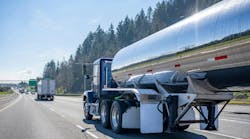The Environmental Protection Agency (EPA) is issuing a final New Source Review rule that requires consistent accounting for air emissions that are not released through a stack, vent, or other confined air stream.
The New Source Review program is a preconstruction permitting program that ensures that air quality is not significantly degraded from the addition of new and modified factories, industrial boilers, and power plants and assures that any large new or modified industrial source in their neighborhoods will be as clean as possible, and that advances in pollution control occur concurrently with industrial expansion, according to EPA information.
Affected industries include those using fossil-fuel boilers totaling more than 250-million Btu per hour heat input and petroleum storage and transfer units with total storage capacity exceeding 300,000 barrels.
The emissions under the new regulation, also called fugitive emissions, can escape from equipment leaks or evaporation. The revision requires facilities to account for fugitive emissions from major modifications to existing facilities the same way they account for fugitive emissions from major newly constructed facilities under the new source review program. Fugitive emissions would be included in determining whether a physical or operational change is a major modification only for industries designated through previous Clean Air Act rulemakings.
More information is available at epa.gov.
In addition, EPA is issuing a final amendment to the leak detection and repair requirements allowing the use of optical gas imaging technology to locate emission leaks. The leaks are displayed on a video screen similar to the way night vision goggles are used to show the heat signature of objects. This amendment provides requirements for using the new technology; however, facilities may continue to use existing approved work practices to detect leaks. This amendment modifies about 40 national rules requiring facilities to find and repair leaks from equipment, including pumps, valves, and connectors, from refineries, chemical production plants, and bulk liquid storage facilities. See more information at epa.gov.








